Sổ Tay Tình Nguyện Nuôi Dưỡng Chó
Chào mừng đến với chương trình nuôi dưỡng chó tại MCAS. Mỗi năm MCAS tiếp nhận khoảng 2.500 con chó và chó con. Một số chó con trong số này cần thêm một ít TLC trước khi chúng sẵn sàng để nhận nuôi. Một số chú chó con của chúng ta còn quá nhỏ để trải qua phẫu thuật, bị chấn thương, mang thai, đang trong quá trình điều tra hoặc có hành vi hoặc mối quan ngại về y tế cần thời gian và phương pháp điều trị để giúp chúng hồi phục. Chúng tôi nhờ cậy các gia đình nuôi giúp những con chó này! Cảm ơn bạn đã đồng ý nhận vật nuôi từ MCAS. Chúng tôi rất vui được bắt đầu làm việc cùng với bạn để giúp đỡ những con vật này.
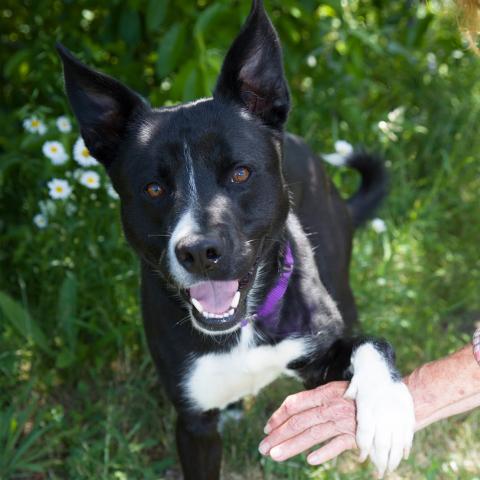
Laura Hinrichs
Contents
- Notification
- Pickup
- Follow-up Appointments
- Adoption
- Dog Foster Training Video
- Feeding
- Cleaning Up
- Creating a Safe Place to Foster
- Set-Up
- Feeding
- Bathing
- Socialization
- Mother and Litter
- Resource Guarding
- Separation Anxiety
- Jumpy Mouthy
- Reactivity
- Fear
- Housetraining
- Meeting other dogs
- Meeting Cats
- Crate Training
- Fleas
- Ear Mites
- Diarrhea
- Vomiting
- Kennel Cough
- Parvovirus
- Ear Infections
- Luxating Patellas
- Low stress medicating tips
- Tips for a finicky eater
- Q: Can I let my foster dog interact with my personal pets?
- Q: How much time will I need to dedicate to fostering a dog?
- Q: How does medical treatment work with an MCAS foster pet?
- Q: How long will I be fostering each pet?
- Q: What are the common reasons that dogs need fostering?
- Q: What should I do if my foster dog bites someone?
- Q: What should I do if my foster dog escapes?
- Q: What if I want to adopt one of my foster dogs?
- Q: What if one of my friends or family members wants to adopt?
- Q: How do I get started?
Fostering Process
Notification
A request for the dogs and puppies that are in need of foster will be sent out in an email as the need arises, but generally once a week. Interested parties should respond to the email or call the Foster Coordinator.
The Foster Coordinator will also maintain a list of open foster homes to contact directly when a match comes up. Please notify the Foster Coordinator of any particular interest.
Pickup
You will make an appointment with the Foster Coordinator to pick up the dog and notify them of the need for any supplies. The shelter can generally provide you with food, a crate, a collar and leash and potty pads. If you are requesting a meet and greet between your dog and the potential foster dog, please notify the Foster Coordinator ahead of time.
When you arrive, you will check in with the front office staff. There you will be asked to sign a foster agreement and be provided with paperwork including medical records, medications, and any other supplies that you needed.
Follow-up Appointments
The need for follow up appointments will vary with each foster but generally, you should expect to come to MCAS on at least a monthly basis for rechecks. Some may require visits more frequently. Please contact Animal Health, at foster-medical-help@multco.us to schedule these appointments.
Adoption
Dogs that are in foster care for a medical reason will need to be cleared by Animal Health prior to being made available for adoption. Generally speaking, these dogs can be returned to MCAS for adoption or attend an outreach event if available after being cleared at their recheck appointment. Dogs that are in foster care for a behavior reason, will be made available for adoption at the discretion of the Canine Care Specialist or the Foster Coordinator. The determination at that time will be made whether they should return to MCAS for adoption or stay in the foster home. Once cleared for adoption, foster parents are encouraged to network their animals. All interested parties will need to come to MCAS for an adoption counseling.
Prior to an animal being made available for adoption either at the shelter or from your home, provide the Foster Coordinator with a clear photo and a biography for the website. The biography should include information about their ideal home setting and some of their great qualities or quirks. Include information about how they are with other pets, if known, their exercise needs and their unique interactions with you. Write the biography in the first person to better grab the attention of the potential adopter. If the dog is not getting adoption interest in the first week or two, send the Foster Coordinator another photo or suggest alterations to the biography that emphasis another characteristic of the dog. Many times potential adopters are looking for a key characteristic that your foster dog may have but isn’t noted in their records. You can also send in a short, 30-45 second, video of your foster dog to be uploaded to their profile.
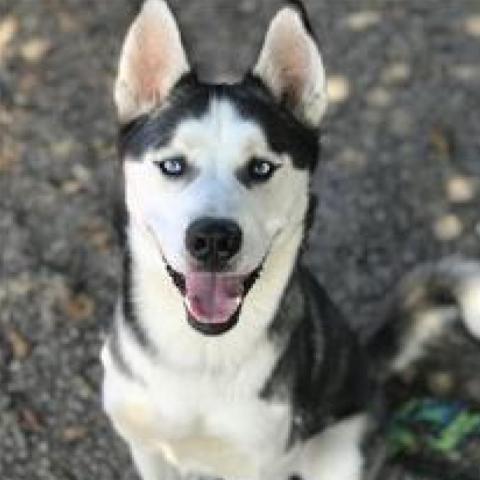
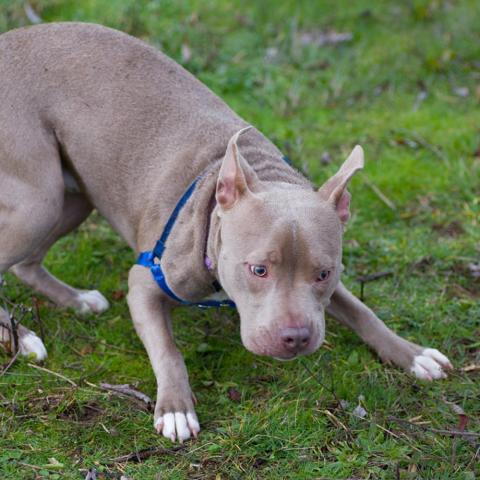
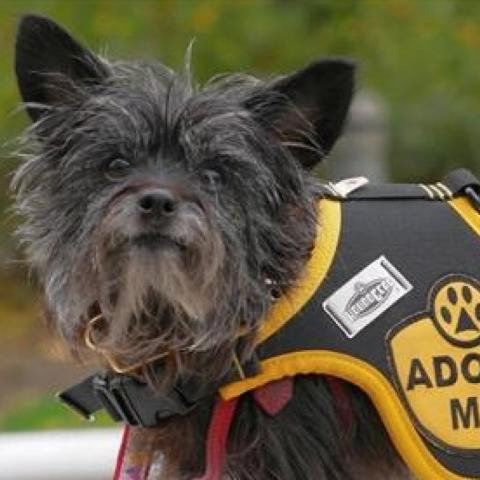
The Basics
Feeding
Unless otherwise specified by Animal Health, adult dogs should be fed a good quality dry dog food according to the specifications of the particular brand. You can feed your foster dog once or twice a day. You can add canned dog food if desired or needed to encourage eating. Unless otherwise mentioned in this manual, foster dogs should not be fed human food of any kind. Chocolate, caffeine, grapes/raisins, mushrooms, onions and garlic are poisonous to dogs. Dogs should have access to fresh water at all times.
Treats that are formulated for dogs are a great way to train, build relationships and are also ok to give in moderation. Be mindful to reduce their regular food when treats are plentiful.
Cleaning Up
It is important that foster dogs have a clean home environment. You should regularly wash their bedding and any other material items they come into contact with. The yard should be scooped regularly as well. We should be good stewards to our community and practice always picking up after our dogs when on walks. In the event that you have a dog with something that may be contagious, contact Animal Health for effective cleaning protocols. In general, you should assume that anything you cannot clean with a 1 to 32 parts bleach and cold water solution, could have potential to transmit germs to other pets.
Creating a Safe Place to Foster
Prior to bringing home a foster dog, it is best to have a plan on where the dog will stay when you are not home or able to monitor them. The shelter recommends crate training your foster dog. See Crate Training for guidance on the process. If crating is not an option, make a space where the dog and your items will be safe and where they do not have visibility to a busy street. Your foster dog may be unfamiliar with being in a home, being left alone, or may simply not be accustomed to your routine. They may chew, scratch or have accidents and having a space where this will have minimal impact on you and your home will help the process run smoothly for you and them.
Do a check of your fencing. You may be fostering a dog who is a different size or more determined to get out of your yard than your pets or previous yard guests. Look for holes, broken boards, or stacked items that allow them to climb and jump over. It is not required that MCAS foster parents have a fenced yard, but this would mean that you are committed to keeping your foster dog on a leash or long line any time you are outside of your home. It is also recommended that your foster dog drag a leash for the first few times in the yard in case an escape attempt is made. Dogs must be under supervision when outside at all times.
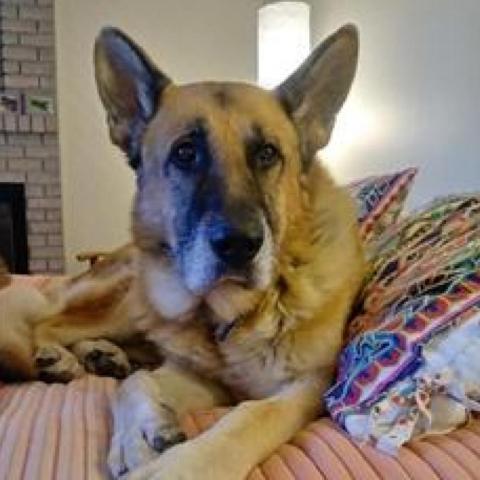
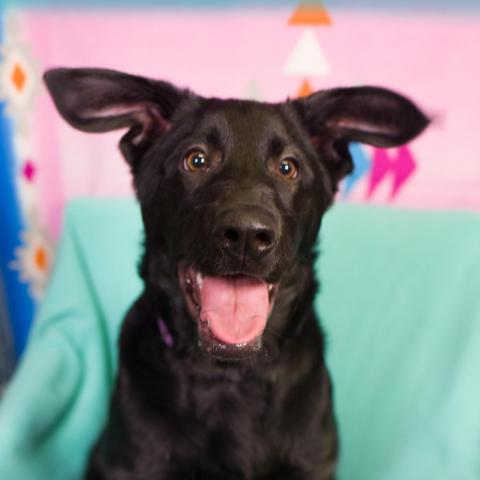
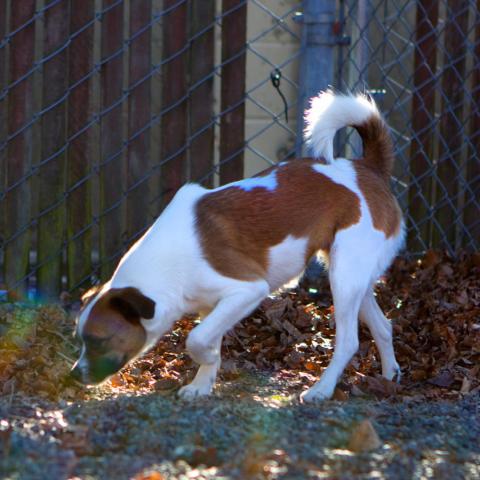
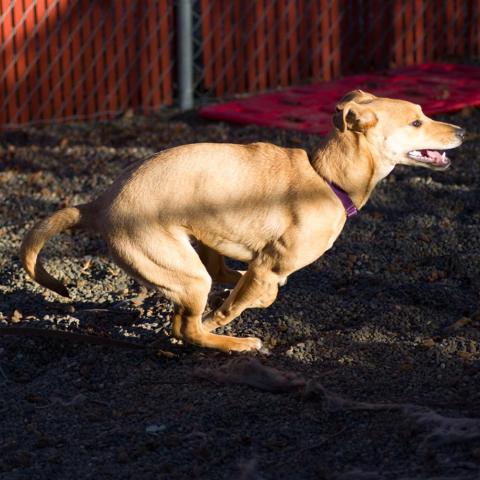
Tools for Fostering
- Leash-Utilize a 4 to 6 foot leash for walks and training opportunities. Dogs must be on a leash at all times when they are outside of a fully confined yard. Foster dogs should not be walked on a flexi-lead. For times when you need a longer leash, use a long line and make sure that you are in a secured space away from other dangers.
- Collar-A flat buckle or martingale style collar with an ID tag should always be on your foster dog. The collar should be snug with the ability to fit two fingers underneath but not more. Any form of corrective collar is not allowed on foster dogs.
- Harness-It is encouraged to utilize a properly fitting harness for walks with your foster dog. There are a variety of kinds and they all serve slightly different purposes but they all relieve pressure from the neck and create a safer and more enjoyable walking experience for the dog.
- Crate-A crate can be plastic or wire. The crate should be big enough for the dog to be able to turn around and stand up but not too much bigger as this can allow them to have a “potty space” and a sleeping space which can delay housetraining.
- X-Pen/Baby Gates-Both are a great tool to limit your foster dog’s space in the home while still allowing them to observe normal household activities. Highly recommended for fearful dogs.
- Dog toys-Toys should be durable and a safe size for the dog. Rawhides, human toys, and household items such as old socks or shoes should not be used. Be sure to pick up all toys when your foster dog is around young children or other pets. Rotating toys can help keep them new and exciting and provide a unique enrichment activity without having to spend more money.
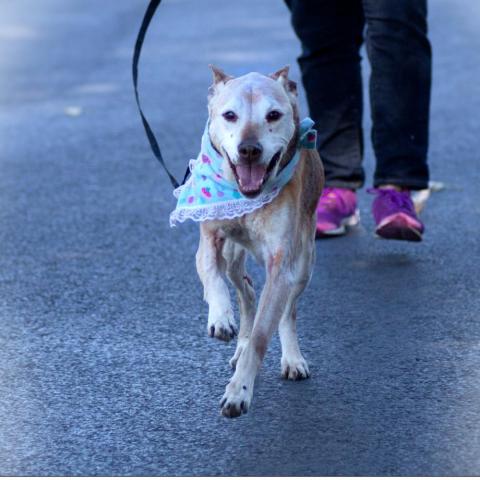
Puppies
Set-Up
It is important to have a space for puppies with or without a mom that is warm, able to be fully sanitized, separate from all household pets and puppy proof. This can be created with an x-pen or be a separate room such as a bathroom or laundry room. Puppies can be very curious and the space should be free from all electrical cords, small items they could choke on and anything breakable. Make sure the toilet lid is closed if using a bathroom and always check the washer and dryer before starting if they are in the laundry room.
Feeding
Pregnant and nursing moms and all weaned puppies under the age of six months should be fed a food that is formulated for puppies. All dogs and puppies over the age of three weeks should always have access to fresh water. Monitor them when they are eating to assure that each puppy is getting enough food and no one is being pushed away from the bowl by the mother or the other puppies.
Begin weaning the puppies at around the age of four weeks. Offer them a gruel of canned dog food that is watered down into a soupy consistency. Over the course of the next week gradually reduce the amount of water to make it thicker. Begin to introduce some soaked kibble by week five. Dry kibble can be offered from six weeks on. These ages are guidelines and each puppy avances at their own rate. They should all be fully weaned by eight weeks though. If you find that they are not, contact the Foster Coordinator.
Bathing
If you have a mom with your puppies, it is likely that she will take care of all the cleaning for you of young puppies. If you find yourself needing to clean your puppies, try to avoid a full bath. Use a damp rag or wash only the parts of the puppies that need it. If a full submersion bath is necessary, make sure the water is warm and that the puppy is fully dried prior to returning to their beds.
Socialization
Puppies should be slowly and intentionally introduced to a variety of people, places and other fully vaccinated and healthy pets in the home. Create positive associations between your foster puppies and the things that they will experience in their world. Introducing them to people of all ages, sexes, clothing types, surfaces, toys and household sounds will help them be well adjusted puppies in their new homes. Do not force your puppy to engage with anything that causes them to be afraid.
Mother and Litter
In many ways when you have mom, your job will be much easier. She will generally, feed, clean and provide all the care the puppies will need until they start to wean. It is best to keep the mom with the puppies until they are a full 8 weeks old and ready to be fixed and adopted out on their own. Contact the Foster Coordinator if you are concerned about her not providing enough care for young puppies or if she seems to be seeking separation sooner.
Provide a separate and quiet space for a pregnant mom and for a mom and the puppies. She may feel more agitated or protective through certain times of the process and having a low traffic area will help her feel more safe.
Once the puppies are four weeks of age, begin allowing the mom some breaks from them. Gradually increase her time away and the frequency of the time away as the puppies age. If she seems uncomfortable with this, simply allow her the choice to leave without actually encouraging her to leave them. She will make the choice when she is ready.



Feeding Schedule
|
Weeks |
Feeding |
Development |
|
0-1 |
Puppies will eat every 2 to 3 hours. Confirm that all puppies are nursing. Puppies that are restless or crying a lot can be indicative of a concern. |
Puppies should be handled minimally. Pay special attention to keeping them warm at this age as getting chilled is the greatest risk for them. |
|
1-2 |
Puppies will continue with the same feeding regime. |
Healthy puppies will be round and warm, When picked up they should be wiggly. They should rarely cry. Their eyes and ears will begin to open. |
|
2-3 |
Feeding will be spaced out to about once every 3 to 4 hours now. |
Puppies will begin to crawl and be almost standing up. They will begin to play with each other. They will begin to teeth. |
|
3-4 |
Puppies will eat about every 4 hours and may start to lap up liquid food from a bowl. |
Puppies begin to see well and will begin grooming themselves. Puppies will benefit from playing with their siblings. |
|
4-5 |
The weaning process will slowly begin. Offer gruel from a flat dish. See “weaning” section for more details. |
Puppies can begin to “meet” normal household inanimate objects. Allow them to observe a vacuum from a comfortable distance for example. |
|
5-6 |
Feed puppies gruel 4 times a day. Gradually thickening the substance. Offer a dish of dry food as well. The dry food can be soaked in water to make it easier to eat the first few times. |
Puppies will begin to wander. Begin introducing them to a variety of toys and surfaces. Make every new interaction a positive one and never force the puppy to do anything they find frightening. |
|
6-7 |
By this age puppies should be eating dry food well. Feed them at least 3 meals a day. |
Begin introducing potty training. |
|
7-8 |
Continue to offer them dry food meals 3 to 4 times a day. |
|
|
8+ |
Feed puppies dry food 3 times daily. |
Schedule them for spay or neuter appointments. |
Court Case Animals
MCAS operates as a law enforcement agency for Multnomah County. As a result, there are times where we are housing animals that are part of investigations. These animals must remain the care of MCAS until the situation is resolved and are seen as evidence in the eyes of the law. The timeline for these hearings are generally completely out of our control. The case may last a few days or can last a couple years.
We try whenever possible to place the animals that are involved in these cases into foster homes so that they do not have to stay at the shelter. A foster home does not have to commit to the entire time of the case and MCAS can always keep them for times when you are on vacation or needing a break. Even a few weeks out of the shelter is a good break for these long term dogs and puppies.
In the same way that evidence is very carefully tracked and handled in the legal system, these dogs must also be very carefully handled. There are several additional rules that go along with these dogs. Some examples include but are not limited to, absolutely no photographs of them, no unmonitored time outside and no discussions with outside parties about their cases or condition.
If you are interested in helping these animals thrive during their court holds, contact the Foster Coordinator regarding next steps. These animals come with some extra work and rules but they are often some of the most grateful creatures in our care. Your home may be the first family that has ever provided them with stable affection or a warm bed to call their own.
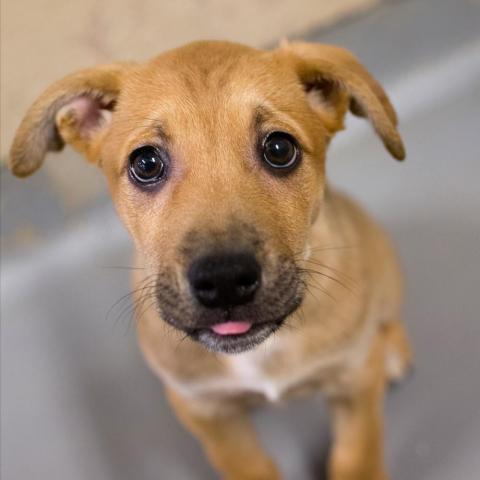
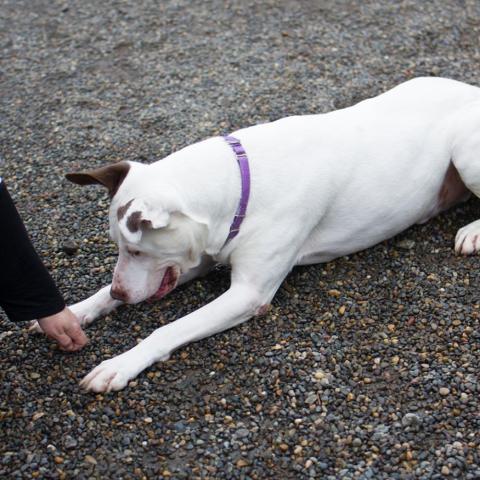
Common Behavior Concerns
Your foster dog has likely been through several transitions over the last few days. Give them time to adjust and go slow with their introductions to new things. We will do our best to provide you with any behavior information that we have but in general, we are unlikely to know everything you will experience. Since we are still getting to know them, you should never leave them unattended with children or with your other pets.
MCAS takes a strong stand against any form of corrective or aversive training methods and requires that our foster parents follow suite. It is important to provide these dogs with a consistent training plan from home to shelter and on to their new home. Following plans set in place by MCAS staff for the dogs will benefit them greatly. If you feel that a modification needs to be made or you are experiencing any behavioral concerns, contact the Foster Coordinator as soon as possible.
If at any time you feel uncomfortable with the behaviors that your foster dog is exhibiting, you should contact MCAS staff as soon as possible and know that you are always supported if you need to return the dog to the shelter for any reason.
The following pages contain some common behavior concerns that may arise and some basic information on how to prevent them or reduce their intensity. Please contact the Foster Coordinator for more detailed guidance if you are experiencing any of these concerns.
Resource Guarding
The dog you are fostering may feel the need to protect their items or space. They may show their discomfort by freezing, growling and/or snapping. Never punish your dog for exhibiting these behaviors as this is likely to make the problem worse. Understand that your foster dog may not have always had consistent access to the resources they need and value or that they may have never been taught a different way to communicate. Notify the Foster Coordinator of any guarding you noted in the home. The following are some tips for improving the concern:
- Teach them to share by strengthening your bond with them through basic obedience. They learn that we provide good things when they respond to our communications.
- Limit the situations where they may feel the need to guard. If its a food item, try feeding them in a crate or in a separate room and make sure that no one disturbs them.
- Teach your dog to trade. Offer them a higher value item than what they are protecting. Call them to you and give them a treat. Always return the original item to them after they have taken the treat. Utilize the command “trade” for this exercise.
- If they are guarding a space such as a bed or couch, teach the dog “off”. Utilize high value food to lure them off the item. You should also limit their exposure to this item when possible. Close a door or place something uncomfortable in the space to discourage them going to it.
Separation Anxiety
The dog you are fostering may feel distress by being left home alone. Your foster is adjusting to a lot of change and this can cause higher levels of anxiety as they try to learn their new routine. Separation anxiety can vary in intensity. Minor symptoms may include, pacing, whining, restlessness, barking, whereas a more intense reaction may include things like inappropriate elimination, destruction of objects, escape attempts and self injury. Any persistent minor symptoms and any of the more severe symptoms should be reported to the Foster Coordinator. Dogs do not generally exhibit signs of separation anxiety at the shelter and thus we may not be able to notify you ahead of time. Being proactive to prevent the anxiety in the first place is your best chance at success. Here are a few tips to help the transition to your home be more smooth for everyone:
- Exercise-provide your foster dog with 20 to 30 minutes of exercise before leaving.
- Provide them with a long lasting, special, and safe treat for your departure.
- Leave and return calmly. Ignore over excitement upon your return and interact with them once they are calm.
- Minimize your routine for leaving by practicing them when you are not leaving-grab your keys and then make dinner for example.
- Utilize pheromone products-speak with the Foster Coordinator prior to using these.
- Leave for only a short period of time, the first couple times to assure they are safe when you are not home.
Jumpy / Mouthy
It is common for dogs to have moments where they are over excited. One place we commonly see this is when they greet people in a fashion that involves jumping and mouthing. This can lead to an accidental injury and should be discouraged. There are several things we can do to help dogs learn an appropriate way to be excited.
- Make sure your foster dog is getting enough exercise
- Completely ignore your dog when they jump up on you. Even negative attention can reinforce the behavior.
- Reward them for four on the floor or a sit-You should start this process at a time that is less exciting and gradually work your way up to a time that is exciting, like your return.
- Counsel new people coming to your home to engage with your dog in the same fashion.
Reactivity
A dog who is being overly reactive to a situation may present as a dog who is hiding, barking, lunging, or growling. This can happen in a variety of situations but you are likely to see it through a window, through the fence, or while on a leash. If you are experiencing a dog that is presenting with any of these behaviors and is not easily redirected with food or a happy voice, contact the Foster Coordinator for advice. The best method to reduce reactivity is to avoid situations that cause it.
- Pick a walking path with the least amount of triggering stimuli.
- Pay attention to your dog. Watch for more subtle signs that he is uncomfortable with the situations-erect tail, stiff or raised body, puffing of cheeks, raised hackles.
- Keep distance from your dog and the object that is causing the reaction. For example walk to the other side of the road when approaching a dog in a yard that barks at them or a dog on a leash coming toward you.
- Always have treats on hand. From a comfortable distance treat your foster dog for seeing an arousing situation to create a feel good association.
Fear
Fear can be the result of a lack of proper socialization or as the result of a negative correlation. There are several indicators that a dog is uncomfortable with a situation. See the infographic on page ___ for some guidance on body language. Seeing the more subtle signs of fear can help you protect your foster dog from being put in situations where they may feel the need for a more exaggerated response such as growling, snapping, or biting. When fostering, we hope to reduce the situations where you find your dog to be uncomfortable. For example, if they are showing signs of fear in regards to children, keep them separated from the children. Communicate with the Foster Coordinator regarding situations that make your foster dog uncomfortable.
Housetraining
Patience is key with housetraining. Your foster dog may be completely housetrained but may still have accidents. They do not know your routines, you may not know their cues, they may have had potty pads or a dog door or they may have had a setback while they were in the shelter. There are other times where your foster dog genuinely does not know how to go potty where it is appropriate. For dogs and puppies over the age of 8 weeks, follow these guidelines to set them up for success from the beginning. Ask for help from the Foster Coordinator as needed.
- Determine where you want your foster dog or puppy to eliminate. Take them there every time.
- They should go out every time there is a transition in activities-waking up, after eating or drinking, after play time or at least once every two hours for adults and every 45 minutes for puppies.
- Stand with them outside for five minutes. If they eliminate, reward them with a treat, praise etc.-whatever is most exciting for them.
- If they do not eliminate, take them back inside and try again every 15 minutes until success.
- Supervise closely inside-watch for wandering and sniffing and quickly take them out to the elimination area.
- If you they do have an accident in the house, do not correct them. Simply clean the area with an odor neutralizer and reinstate the schedule. Punishment can have several side effects that can damage your relationship with the dog and can actually make housetraining much more difficult.
- Utilizing a crate for times where you are not able to monitor the dog or puppy to prevent them from practicing improper elimination. This will make the housetraining process much easier.
Meeting other dogs
MCAS may occasionally require a meet and greet with your dog(s) and the foster candidate before taking the pet home. In the event that it is not required, it can always be requested by the foster parent. If it is not required, and you choose to do it at your home, these tips can help make the interaction more safe. Please know that even a dog who was previously noted to be dog social may not get along with your dog and caution should be used.
You should introduce your foster dog to each of your dogs individually. It is best to introduce them outside in an open, secure space. All high value items should be removed.
- Recruit a second person to help you.
- Put your resident dog out in the yard or in a separate room or crate. Allow the foster dog to explore your home off leash. They will want to check out all the rooms, toys and smells. They should be allowed to do this without the resident dog getting in the way.
- Leash both dogs and take them for a parallel walk around the block. This allows them to casually see each other but not have to engage and provides a neutral ground to meet. Keep them separate if possible. Walk them on the outside of you and have the two people walk together.
- If the walk seems to go well, take them back to your yard and allow them to meet on leash. Hold the leash at the beginning and move with the dog to prevent the leash from having tension on it or becoming tangled. It can feel a bit awkward but allows you to pull them apart easily if it is not going well.
- Next, drop the leashes and allow them to interact freely. Let them drag the leashes for the first several minutes.
- Continue to monitor all interactions. Never leave your foster dog with your dog unattended.
- Contact the Foster Coordinator if you have questions or are having any concerns about the interaction.
Meeting Cats
It is rarely known how your foster dog has been with cats. In the event that they have been noted to be good with cats, caution should still always be used. A new home is exciting and it is recommended that you wait at least a week or two before introducing them. Utilize a system to keep them entirely separate. They can still smell each other, under the door, through a gate etc and will know that they exist but there is no pressure to engage.
To introduce them, keep your foster dog on a leash and allow your cat to roam freely. If you have several cats, introduce them one at a time. Allow the cat to approach the foster dog. Separate them if you see that either animal is becoming overly aroused or if there is any aggression from either party. The interaction should be positive for everyone and no reactions should be corrected. If it does not go well, simply separate them and contact the Foster Coordinator for guidance.
Crate Training
The goal with crate training is to make the crate the dog’s most comfortable place in your home. Create a comfortable and welcoming environment for them. Place their favorite blanket in it and set it up in a place where they can watch you and not feel isolated. Your office while you work, the living room while you watch TV etc.
- Place their food and water in the crate.
- Begin by encouraging the dog to go in on their own. Toss treats inside and help them practice going in without locking them in. Continue this until they go in and out easily on their own.
- Next, toss a couple treats and close the door. Open it immediately and praise them. Allow them to leave. Repeat this several times.
- Then toss treats, close the door, and wait about 15 to 30 seconds. Treat and praise them again. Let them out.
- Continue to gradually increase the time that they are in the crate without you leaving the room. Do it while watching TV or reading a book. Make sure they can see you the entire time.
- Then you will toss a treat in the crate, close the door and walk out of the room. Come right back. Treat and praise and let them out. Repeat several times. Begin increasing the time before your return.
- It would be ideal if you were able to practice this routine for a couple days before leaving the dog at home alone.
- Leave them alone the first time for a very short time. Never leave them the first time for an entire working shift.
Move through this process as slowly as needed to prevent panic. Use several short, 5-7 minute sessions throughout the day. We do not know many of these dogs’ history and some may be perfectly crate trained and love it and others may take some time. We find that there is a low instance of animals who are unable to be crate trained but there is a wide spectrum of time that it can take a dog to be comfortable with it. Setting them up for success from the beginning is the best way to prevent the issues that can arise when an anxiety inducing method is utilized. Contact the Foster Coordinator if you are having any concerns with crate training.
Foster dogs should not be introduced to pets that are not living in your home. Off leash areas and off leash dog parks are prohibited. It is a good practice to enable the five foot rule-keep all non-household pets at least five feet from your foster dog. Sometimes people can insist on an introduction, simply let them know that this is a foster dog in training and ask that they refrain.
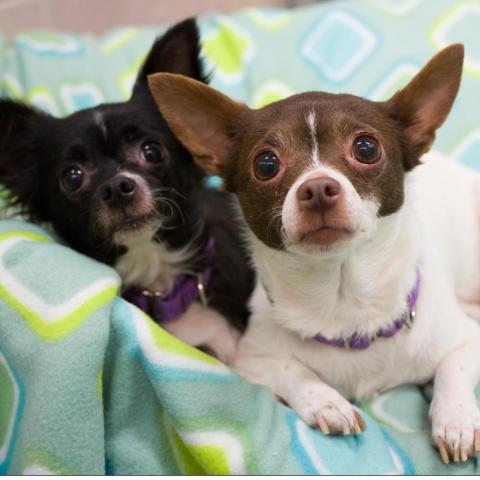

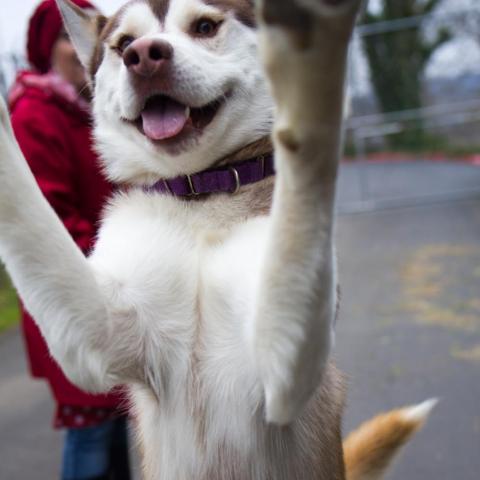
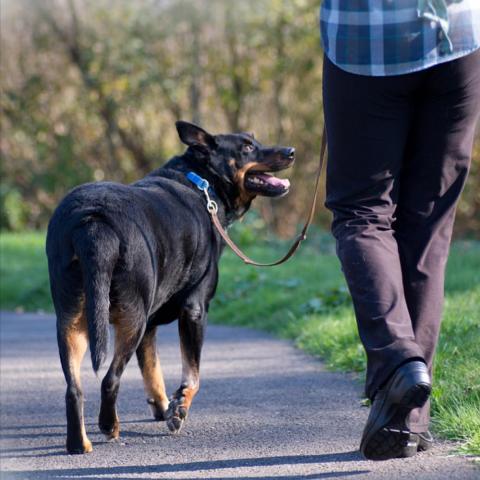

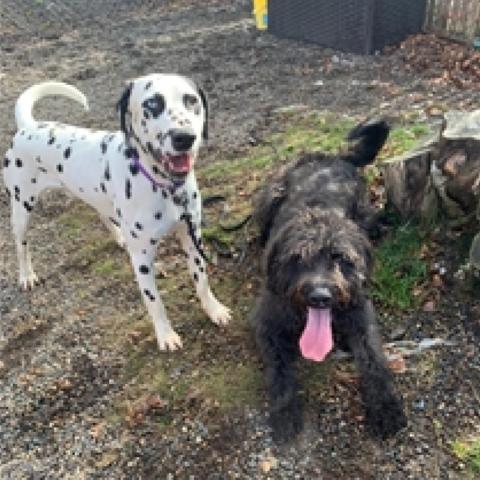

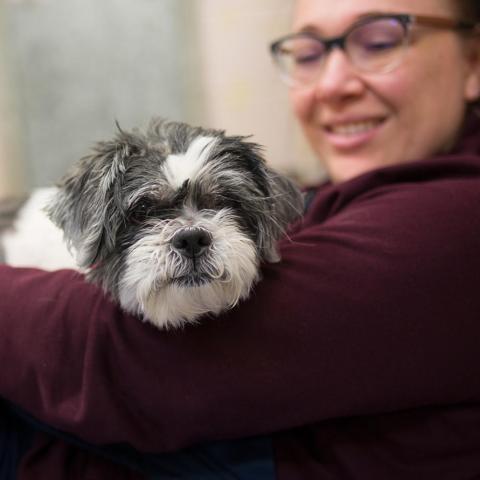

Laura H.
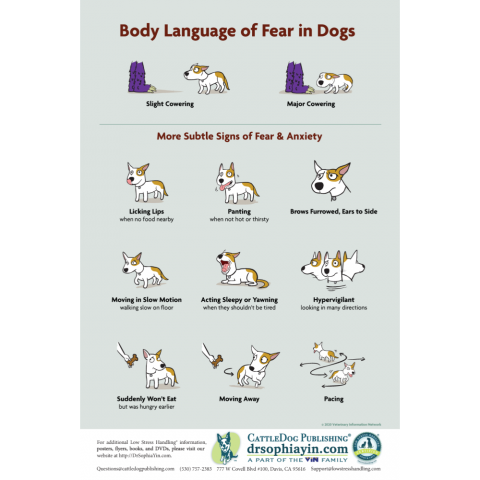
Dr. Sophia Yin - Low Stress Handling in Dogs - Free Posters - Body Language of Fear in Dogs
Common Health Concerns
All dogs should receive health exams before going into foster care and any known health concerns will be discussed with the foster parent prior to pick up. However, it is possible for symptoms to develop after the dogs are taken home. Because of this, it is very important to keep your foster dogs in a separate area, with separate bedding and without contact to your other household animals. MCAS is not responsible for treating any other animals in the foster home in the event that something is shared from a foster pet.
It is expected that all veterinary care will be provided by MCAS or an approved emergency veterinarian under an emergency situation only. A foster parent may not take a foster pet to any other veterinarian. No medications, prescription or otherwise, are allowed to be given to foster pets unless previously authorized by MCAS veterinarian staff. Failure to follow this rule may result in no longer being a foster parent with MCAS. Any unauthorized veterinary care will not be reimbursed by MCAS.
Fleas
Whenever possible, your foster dog will be treated for fleas before going home with you. Flea treatment should be applied monthly. Contact Animal Health for follow up treatments.
Ear Mites
A dog with ear mites will have crusty black debris in their ears. The ears will often be itchy and may have a foul odor. Treatment is simple with medication, though sometimes more than one treatment is required for complete resolution.
Diarrhea
Diarrhea can be caused by a variety of things including a change in diet and stress. Soft stool or diarrhea is to be expected the first couple days after coming to your home. You can try a bland diet of boiled chicken and white rice for a day or two to see if this alleviates the symptoms. If the stool doesn’t improve, it may be indicative of a more serious concern. Animal Health should be contacted if it persists for more than 72 hours in adult dogs and 24 hours for puppies, or if it is accompanied with lethargy, loss of appetite or vomiting or contains blood.
Vomiting
Vomiting can be the result of stress or diet change and can be monitored. You can try switching to a diet of boiled chicken and white rice for a couple days to see if this helps to alleviate the symptoms. Fasting may also be needed to prevent stomach upset. If the vomiting continues for more than 48 hours in adult dogs and 24 hours in puppies or is accompanied with lethargy or loss of appetite, Animal Health should be contacted.
Kennel Cough
Kennel Cough is similar to the human cold. It can be caused by either a bacteria or a virus. It commonly appears as a hacking cough but may also be present with sneezing, eye discharge and nasal discharge. The dog may cough up a foamy mucus that can be confused with vomiting. Mild episodes of kennel cough can be monitored and do not require treatment. If your foster dog has colored discharge, persistent coughing/sneezing or any symptom accompanied by lethargy, Animal Health should be contacted. Kennel cough is highly contagious to other dogs and they should be kept separate from all other dogs for at least 2 weeks after symptoms resolve.
Parvovirus
Parvovirus is a highly contagious and serious illness in dogs. It is generally seen in young puppies but there is the occasional case where an adult dog who is not fully vaccinated can contract it. The symptoms include bloody diarrhea, vomiting and lethargy. Any of these symptoms in puppies should be reported to Animal Health immediately. Keep the puppy separated from other dogs and in an area easily disinfected until seen by Animal Health.
Ear Infections
Ear infections are commonly seen in dogs, but those of certain breeds or with long, floppy ears are more susceptible. Ear infections will commonly have brown or yellow discharge, redness or a bad odor. These infections can be itchy so dogs will often shake their heads or paw at the ears. Most ear infections are easily treated but some may be more difficult if underlying conditions, such as allergies, are present. Animal Health should be contacted for an appointment so treatment can be started.
Luxating Patellas
Luxating patellas are common in small breed dogs, but any dog may have them. This is a condition where the kneecap will slip in and out of place as the dog moves. You may observe the dog have a skip in their step or they may hold up a leg for a period of time while they are walking or running. This is a condition that can vary in severity but generally does not require treatment or surgery.
Tips for a finicky eater
- Add no sodium chicken or beef broth to their dry food
- Canned dog food
- Boiled chicken and cooked rice
- Single ingredient meat human baby food (no onions)
- Freeze dried foods

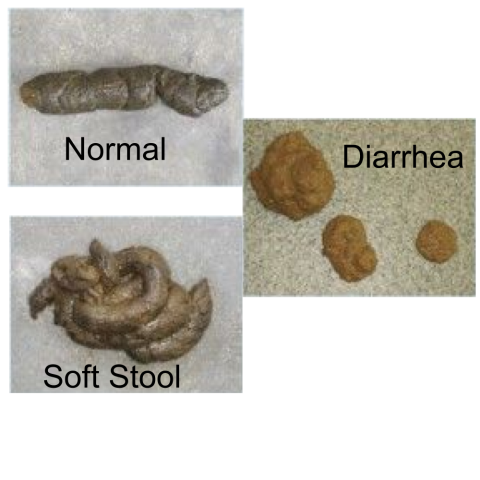
Low Stress Medicating Tips
Hide the Pill
- Cheese
- Liver sausage
- Peanut butter
- Canned dog food
- Bread
- Pill pockets
Use your hands
- Hold the dog's head and gently tilt it back
- Drop the pill on the back of the tongue
- Close the mouth and hold it shut while you run your hand on their throat or blow gently on their nose until you feel them swallow
- Follow with food and praise
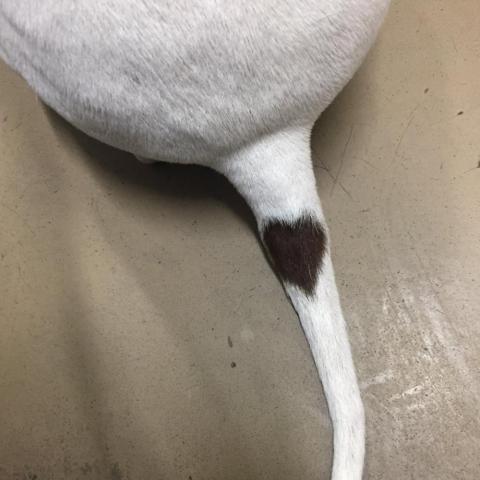
Hospice
MCAS has a hospice program for dogs that enter the shelter and have a terminal illness. These dogs may have a variety of different conditions and will need individualized care to address their needs but still have a good quality of life. MCAS will provide palliative care to these pups and we ask that our foster families provide them with a loving and compassionate home.
Hospice dogs will need monthly rechecks at MCAS and may occasionally “graduate” from the program and be cleared for adoption. At each of your appointments, the Animal Health team will assist with creating the best plan for these dogs.
It is common for hospice dogs to need subcutaneous fluids and/or medications. Animal Health is available to show anyone the process. We can also have them come to MCAS to receive fluids as needed.
Monitoring your hospice dog’s quality of life is important. Dogs are exceptionally good at hiding pain and discomfort. As their caregivers, we need to look for the more subtle signs that they may be ready to go. These signs may include: a loss of appetite, significant weight loss, the start of house soiling, having more bad days than good, difficulty breathing or changes in behavior. Contact Animal Health if you are concerned about any of these symptoms. Animal Health is skilled at making these decisions and are here to talk with you through the process.
All of fostering, but especially hospice care, is a special process and one that takes immense compassion. Please see the “Additional Resources” page at the end of this handbook for some places for assistance with grief support. Always know that staff are available as well to help you through the harder times of this journey. This program is incredibly rewarding but occasionally there is a need for a bit of additional outside support.
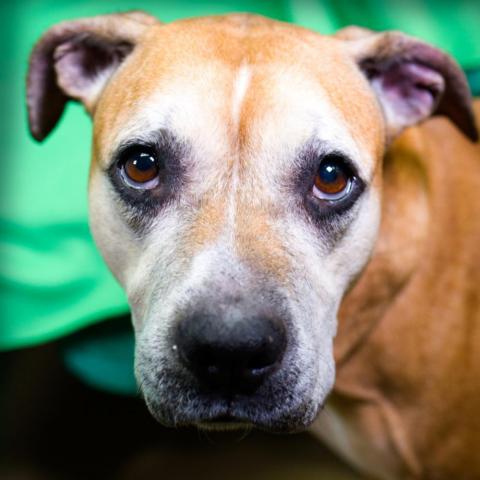
Laura H.
Emergencies
For emergencies between the hours of 8AM and 5:30PM:
- Email the medical team at foster-medical-help@multco.us and call 503-988-9075. Leave a message.
- Come to the shelter immediately! Do not wait for a response.
- Please have the animal ID number with you and provide this number at all points of contact whenever possible but do not let it delay you.
For emergencies between the hours of 5:30PM and 8AM:
- If you are unsure if it is an emergency, refer to your foster contact sheet for a list of current foster mentors for guidance.
- Take the pet to one of the following approved after hours veterinary clinic.
Dove Lewis
1945 NW Pettygrove St
Portland, OR 97209
503-228-7281
- If possible, bring your foster’s medical records with you.
- Notify the clinic that this is a foster pet with MCAS and they will not charge you for the care they provide.
- Notify MCAS as soon as possible that you have taken an animal to an after-hours veterinarian via email at foster-medical-help@multco.us and a call to 503-988-9075. Please include the animal number.
Not Immediately ConcerningAppropriate to monitor |
|
Non-EmergencyContact Animal Health at foster-medical-help@multco.us to see if an appointment is needed. |
|
EmergencyRequires immediate attention - See “Emergencies” on previous page for guidance |
|
Frequently Asked Questions (FAQ)
Q: Can I let my foster dog interact with my personal pets?
A: We do the best we can to notify foster parents of all known illnesses that a dog may have. Unfortunately, they may be carrying a disease or parasite without showing symptoms for quite some time. We highly recommend keeping foster dogs and personal pets separate at all times. At a minimum, we recommend a two-week quarantine period. Personal pets must be up to date on vaccines, parasite preventatives and be healthy.
Q: How much time will I need to dedicate to fostering a dog?
A: The time commitment with vary with each dog. A bottle baby puppy will require feeding every 2 hours around the clock but a senior dog may only need a brief walk or a short play session. Many foster parents work full time jobs or have other commitments. Work with the Foster Coordinator to find a dog that matches your lifestyle.
Q: How does medical treatment work with an MCAS foster pet?
A: As an MCAS foster parent, you will be required to work with our onsite veterinary staff for all routine care and emergencies that occur during the hours of 8AM and 5:30PM. This may mean several visits to our location throughout the time you have the foster dog.
Q: How long will I be fostering each pet?
A: The length of need for fostering will also vary with each dog. Generally, you will be fostering for two and four weeks, though some dogs can have significantly longer time needed in foster. The request for foster will provide you with an expected time frame.
Q: What are the common reasons that dogs need fostering?
A: Dogs may need foster for a variety of reasons. Puppies who are too small for adoption, dogs with a medical or behavior concern that we would like to work with or learn more about, a final home for hospice care or dogs who are part of an investigation and on a legal hold.
Q: What should I do if my foster dog bites someone?
A: In the event that your dog bites a person, you must contact the Foster Coordinator within 24 hours of the incident. If the bite broke the skin, then it is required by law to have it documented and the animal quarantined. This includes bites that are non-aggressive in nature. The quarantine process is simple and requires that the dog remain in your home or at the shelter for a 10 day period and be isolated from people and pets that they were not previously interacting with. We hope to avoid these situations whenever possible, but they do happen and we are here to support you and the dog through the process.
Q: What should I do if my foster dog escapes?
A: If your foster dog escapes, you should make every attempt to get them back into the home as soon as possible. If you are unable to get them quickly, file a lost report on the MCAS lost and found page and contact the Foster Coordinator.
Q: What if I want to adopt one of my foster dogs?
A: Foster caregivers may adopt their foster dog or puppy. They will need to notify the Foster Coordinator, come to MCAS to complete the adoption application process, and pay the standard adoption fees.
Q: What if one of my friends or family members wants to adopt?
A: Foster parents are encouraged to find adopters for their foster dogs through friends, family members or social media. The potential adopter should come to the shelter to meet with an adoption counselor during normal business hours after the dog is cleared for adoption. If you are fostering a puppy under the age of 6 months, then the puppy must be returned to MCAS for adoption and adopters would be reviewed on a first come, first served basis.
Q: How do I get started?
A: Attend an Informational Session! This is the first step for all MCAS volunteers. These are typically on the 4th Wednesday of the month from 7 to 8PM but you can confirm the dates and times on our website at multcopet.org/events.
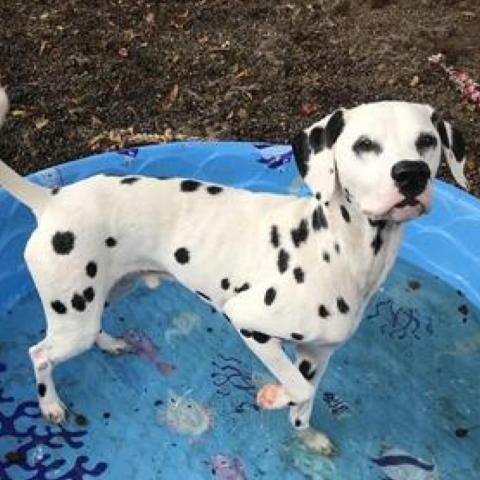
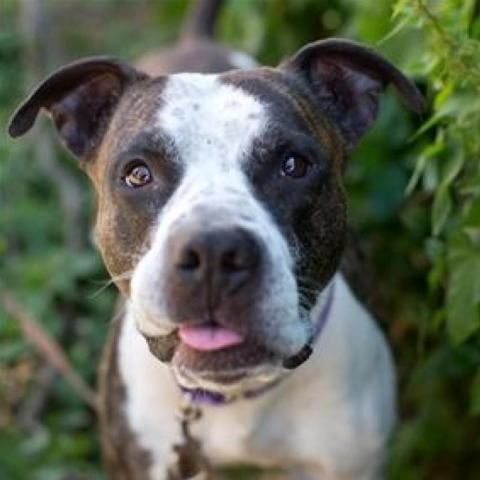
Additional Resources
- www.aspcapro.org-A resource for a variety of topics regarding shelter animals and their care.
- www.maddiesfund.org-Another great resource for a wide variety of information including many how-to videos.
- www.sfspca.org.-San Francisco SPCA has an online dog behavior library. Also has a great packet on hospice fostering and kitten fostering.
- https://www.ddfl.org/resource-library/ Dumb Friends League has an extensive behavior library.
- www.dovelewis.org/pet-owners/pet-loss-support-Dove Lewis has a wide range of Pet Loss Support resources including art therapy, remembrance ceremonies, and grief support.
- https://bestfriends.org/resources/cats-Best Friends is the largest No-Kill Animal Sanctuary in the United States. Their website is full of great behavior and medical tips.
- https://www.dunbaracademy.com/ Dunbar offers a vast website with both free and for purchase resources to learn about dog behavior.